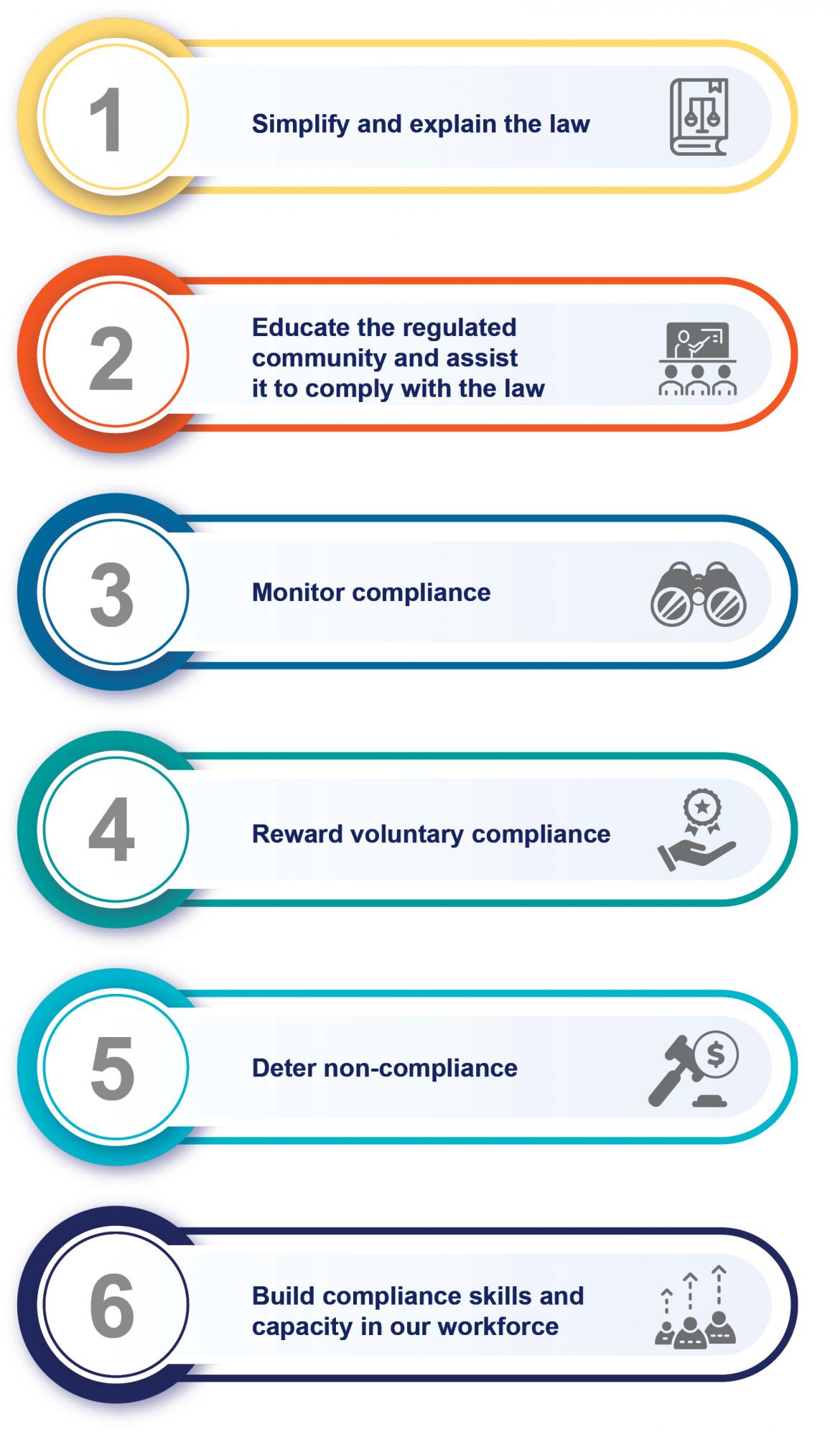AMSA’s Compliance Strategy has six elements:

AMSA will develop a comprehensive and flexible approach to maximising compliance by actively considering each of these elements. The regulated community will understand their obligations under the law and can benefit from reduced monitoring and regulatory intervention. Those who choose not to comply will be subject to the full range of enforcement powers.
Element One – Simplify and explain the law
The regulated community must be aware what the law is and how it applies to them and their activities before they are able to willingly and voluntarily comply.
Our intent is to:
- keep the law simple and make obligations clear
- make access to all elements of the law simple
- make compliance easy
- develop generic aids to explain how the law works
Element Two – Educate and assist the regulated community comply with the law
The regulated community can rely on AMSA to help them comply with the law.
Our intent is to:
- develop and deliver education programs that are informed by the National Compliance plan or intelligence to encourage voluntary compliance. This may be entity, operation or event specific.
- engage with the regulated community to find out where they are having difficulty and look for ways to alleviate the problems
- provide information and resources to encourage and facilitate compliance
Element Three – Monitor compliance
The regulated community should know that AMSA will strategically monitor compliance to achieve its aims and to ensure a level playing field.
Our intent is to:
- publish an annual National Compliance plan that focus on identified risks informed by safety data and intelligence.
- tailor monitoring to encourage change in compliance behaviour
- share learnings from monitoring activities both within and outside AMSA
- work with compliance partners to avoid duplication and share data
- use data and analysis to better understand compliant and non-compliant behaviour
Element Four – Reward voluntary compliance
The regulated community should benefit from compliant behaviour because it advances AMSA’s aims, reduces regulatory costs and sets a benchmark for others to aspire to.
Our intent is to:
- reduce regulatory burden on those who comply
- develop ‘trusted’ partnerships
- recognise and promote industry exemplars
- consider ways to provide service benefits in interactions with AMSA
- explore opportunities for alternate compliance delivery models
Element Five – Deter non-compliance
The regulated community should know that AMSA will apply all means available within the law to deter opportunistic or deliberate non-compliance.
Our intent is to:
- develop data and programs to identify non-compliance
- develop resources to investigate high risk, deliberate or repeated non-compliance
- work with compliance partners to target those who offend in multiple jurisdictions or legislative regimes
- increase regulatory oversight of those who do not comply
- publicise enforcement outcomes
Element Six – Build compliance skills and capacity in our workforce
The regulated community must have confidence that AMSA’s staff, and those of its compliance partners, are appropriately trained and resourced to deliver AMSA’s compliance activities in a manner that reflects AMSA’s values, its Regulatory Approach and the principles set out in the Compliance and Enforcement Policy.
Our intent is to:
- allocate adequate resources to deliver AMSA’s compliance function
- develop strategic inter-agency partnerships
- educate AMSA’s workforce and reward excellence
- support compliance functions with appropriate systems and methods
- invest in data, analysis and forecasting capacity
AMSA will develop a comprehensive and flexible approach to maximising compliance by actively considering each of these elements. The regulated community will understand their obligations under the law and can benefit from reduced monitoring and regulatory intervention. Those who choose not to comply will feel the full force of the law.
The overall cost of ensuring compliance will reduce over time, and AMSA’s workforce will assist by being sufficiently skilled to enable them to be professional, collaborative, dedicated and accountable in delivering AMSA’s data-driven regulatory activities.